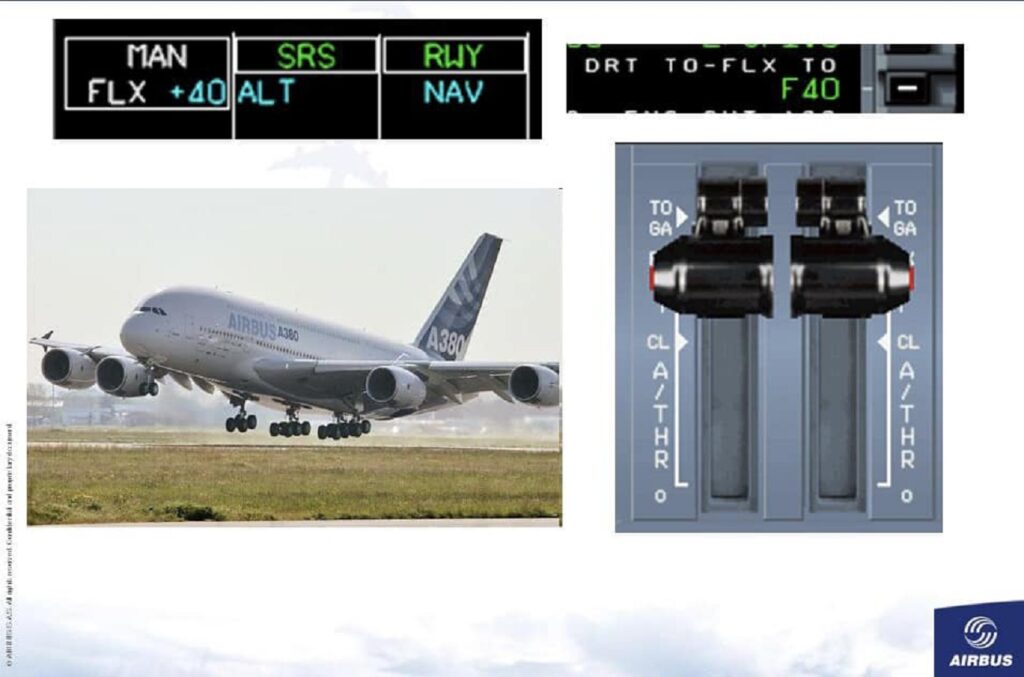
When the takeoff weight is lower than the maximum performance-limited weight, the takeoff can be made with a reduced thrust.
All bigger size jets use this method of “assumed temperature”. In Airbus, it happens to be called FLEX, short of flexible temperature.
The maximum takeoff thrust is limited by outside air temperature (OAT). By assuming a higher temperature than the actual one, the thrust can be reduced.
For example:
- An A320 with weighting 77 tons (maximum structural takeoff weight) with an OAT of 4 degrees Celsius.
- The performance limited weight for the OAT is much higher than 77 tons. For the sake of the example, let’s say 83 tons, but I’m making this number up.
- By calculating the temperature at which the takeoff can be made with maximum thrust at 77 tons, you can reduce the thrust.
- Lets say this value happens to be 40 degrees (I am also making this number up). Then you have it: FLEX value is 40.
- During cockpit preparation, pilots will insert this value on the performance FMS page.
- During takeoff, they will move the thrust levers to the detent marked “FLEX/MCT”. The FLEX thrust will be delivered, regulated by the engines’ computers, called FADECs
This thrust reduction helps reduce fuel consumption, engine stress and maintenance costs.
There are some limitations for the use of FLEX takeoff, but the above explains the principle.
Author – Alejandro Merediz (Captain A350)






